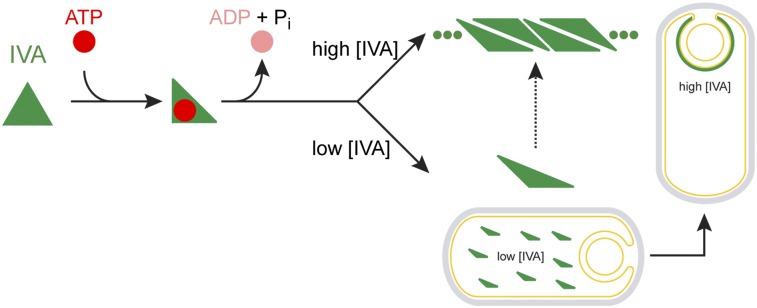Fig. P1.

Model for the role of ATP hydrolysis during assembly of the basement layer of the spore coat. Minimal assembling units of SpoIVA (perhaps trimers) produced in the mother cell of Bacillus subtilis during sporulation (green equilateral triangle) bind ATP (red), which results in a conformational change (right triangle). The bound ATP is then hydrolyzed, and the resulting ADP (pink) and phosphate are released. SpoIVA at high concentrations forms filaments (upper arrow). At low concentrations, SpoIVA undergoes a conformational change (obtuse triangle) that is polymerization-competent once the protein concentration is raised above the threshold. Below, a sporulating cell is shown in which we hypothesize that the SpoIVA concentration in the mother cell is below the threshold. Recruitment of SpoIVA to the forespore surface (Right) could increase the local concentration of SpoIVA above the threshold, which may drive polymerization of SpoIVA at the correct place and time.
